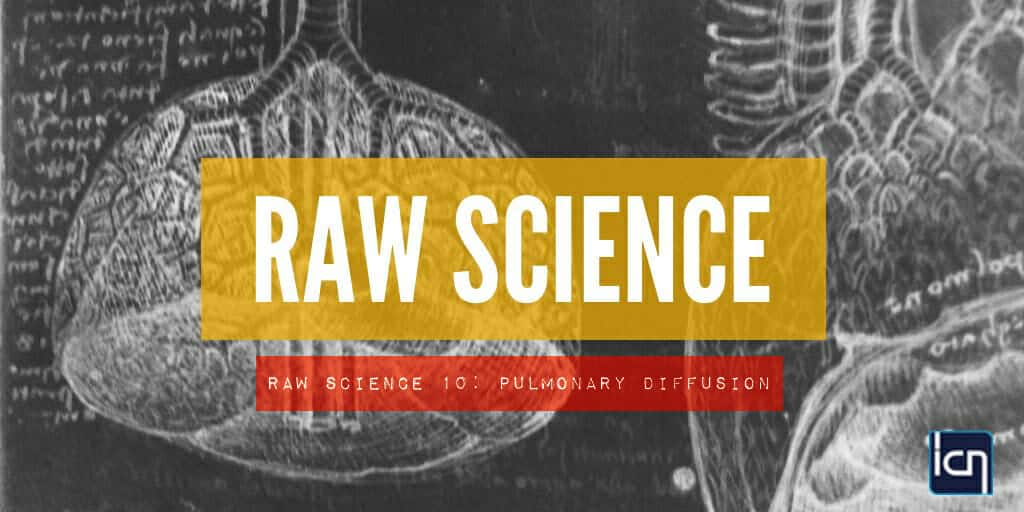Raw Science 10
Pulmonary Diffusion by Steve Morgan & Sophie Connolly
In the words of the 3rd greatest physicist of all time, James Clerk Maxwell:
“It is of great advantage to the student of any subject to read the original memoirs on that subject, for science is always most completely assimilated when it is in the nascent state.”
Welcome to the Basic Science Clinic podcast. Not before time we are ready to approach the alveolar-capillary membrane to substantiate the factors that determine the reciprocal exchange of biologically operative respiratory gases.
For all the demonstrable complexity of transport and signalling mechanisms in the human body, the energetically neutral transaction of simple passive diffusion is culpable for the cascading maintenance of gas exchange homeostasis and oxidative phosphorylation, with its explosive potential for driving the evolution of ostentatious biological complexity.
The adaptive imperative to exploit diffusion for gas exchange imposes certain anatomical demands on the respiratory system. Namely the requirement for a huge tissue surface area of negligible thickness to minimise diffusion impedance, whilst ensuring dependable partitioning of air space and blood compartments, even in conditions of extreme flow and pressure fluctuations.
In this pod we will detail the determinants of diffusion and unravel its antecedence to the segregation of the pulmonary and systemic circulations as a prelude to dissecting the emblematic features of pulmonary perfusion.
In this podcast:
What is Graham’s Law?
How does diffusion proceed in the human lung?
So where does Fick’s law fit in?
What is meant by diffusion and perfusion limitation?
How do we quantify pulmonary diffusion?
What are the physiological components of the diffusing capacity?
How is diffusion responsible for the pulmonary circulation?
Here are some Raw Science factoids:
As barometric pressure reduces linearly with altitude, it reaches 30% of that at sea level when entering the death zone at 8000m, which coincident with an inspired oxygen partial pressure of only 48 mmHg and life-threatening diffusion limitation.
Breathing carbon monoxide at a fractional concentration of 0.0128, 1.28% or 12800ppm leads to unconsciousness in 2-3 breaths and death in under 3 minutes.
Selective breeding of elite racehorses means they can generate pulmonary capillary pressures of the order of 100 mmHg during galloping, leading to near ubiquitous stress failure and varying degrees of exercise-induced pulmonary haemorrhage.
For feedback, corrections and suggestions find us on the twitter handles @falconzao and @sophmconnolly or alternatively post on ICN. Also check out our website basicscienceclinic.com.
Thanks for listening. Next up we’ll perform a detailed public vivisection of the pulmonary circulation.

























